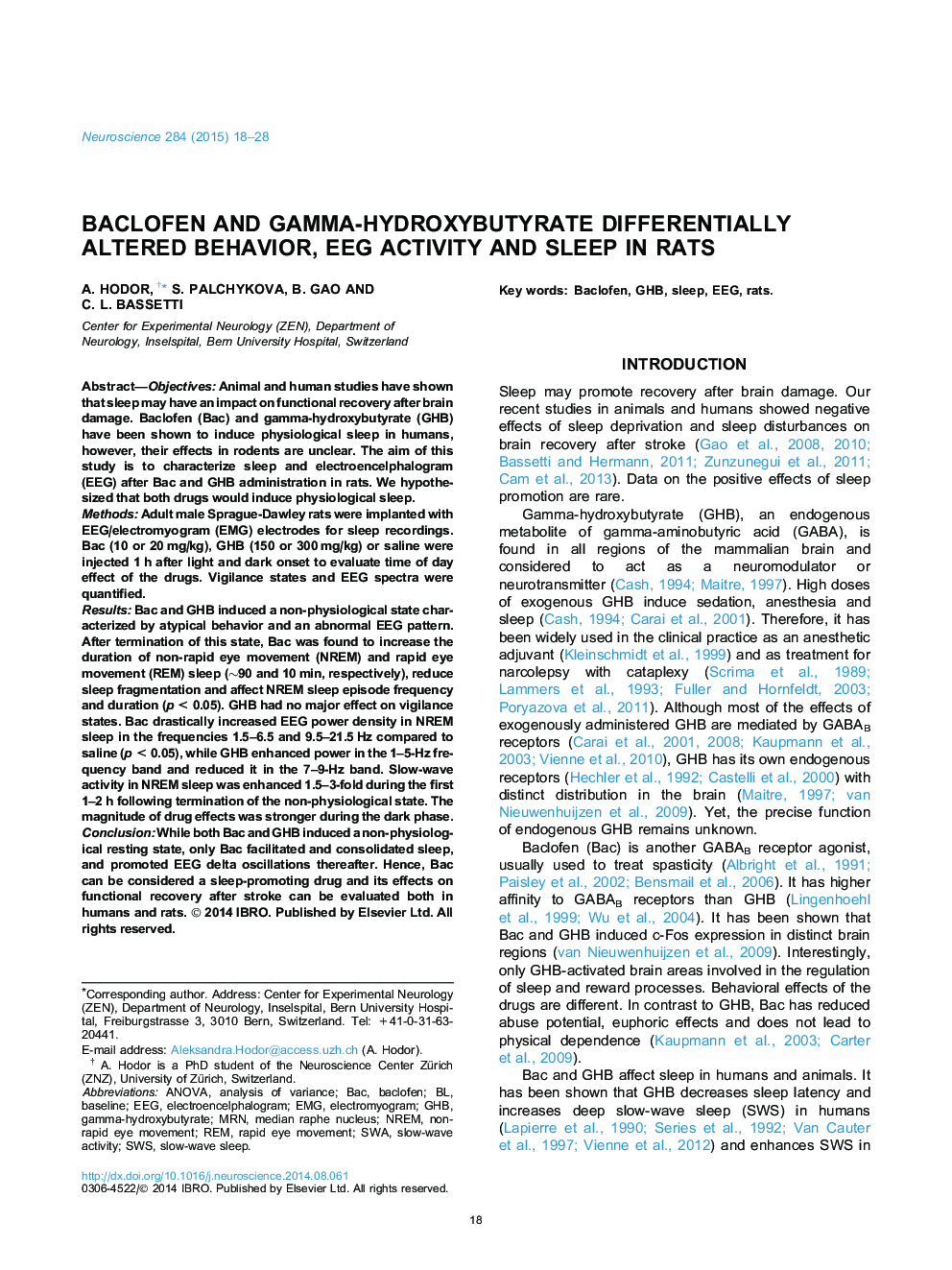| کد مقاله | کد نشریه | سال انتشار | مقاله انگلیسی | نسخه تمام متن |
|---|---|---|---|---|
| 6272882 | 1614792 | 2015 | 11 صفحه PDF | دانلود رایگان |

- Baclofen (Bac) and gamma-hydroxybutyrate (GHB) induce a non-physiological state.
- Both drugs affect vigilance, EEG and behavior.
- These effects are dependent on the timing of drug administration.
- Bac, but not GHB, has sleep-promoting properties.
Objectives: Animal and human studies have shown that sleep may have an impact on functional recovery after brain damage. Baclofen (Bac) and gamma-hydroxybutyrate (GHB) have been shown to induce physiological sleep in humans, however, their effects in rodents are unclear. The aim of this study is to characterize sleep and electroencelphalogram (EEG) after Bac and GHB administration in rats. We hypothesized that both drugs would induce physiological sleep.Methods: Adult male Sprague-Dawley rats were implanted with EEG/electromyogram (EMG) electrodes for sleep recordings. Bac (10 or 20 mg/kg), GHB (150 or 300 mg/kg) or saline were injected 1 h after light and dark onset to evaluate time of day effect of the drugs. Vigilance states and EEG spectra were quantified.Results: Bac and GHB induced a non-physiological state characterized by atypical behavior and an abnormal EEG pattern. After termination of this state, Bac was found to increase the duration of non-rapid eye movement (NREM) and rapid eye movement (REM) sleep (â¼90 and 10 min, respectively), reduce sleep fragmentation and affect NREM sleep episode frequency and duration (p < 0.05). GHB had no major effect on vigilance states. Bac drastically increased EEG power density in NREM sleep in the frequencies 1.5-6.5 and 9.5-21.5 Hz compared to saline (p < 0.05), while GHB enhanced power in the 1-5-Hz frequency band and reduced it in the 7-9-Hz band. Slow-wave activity in NREM sleep was enhanced 1.5-3-fold during the first 1-2 h following termination of the non-physiological state. The magnitude of drug effects was stronger during the dark phase.Conclusion: While both Bac and GHB induced a non-physiological resting state, only Bac facilitated and consolidated sleep, and promoted EEG delta oscillations thereafter. Hence, Bac can be considered a sleep-promoting drug and its effects on functional recovery after stroke can be evaluated both in humans and rats.
Journal: Neuroscience - Volume 284, 22 January 2015, Pages 18-28